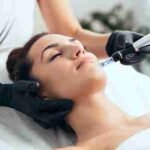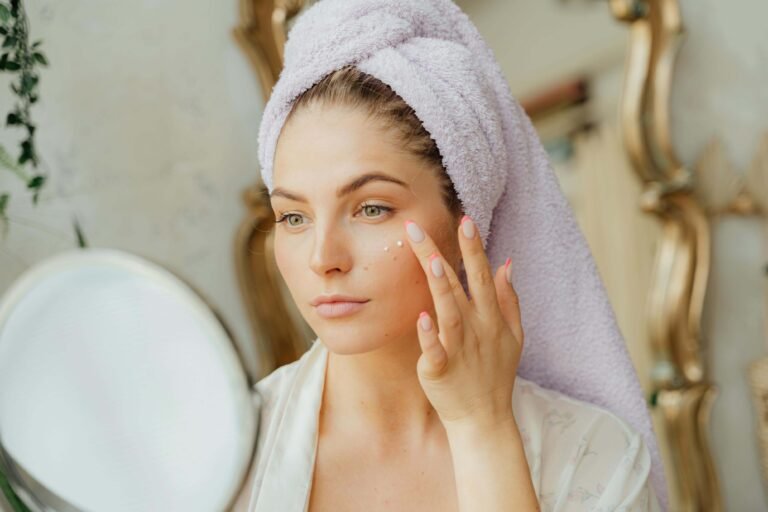Botox is no longer simply viewed as a cosmetic treatment. While it continues to smooth away wrinkles and refresh appearances, it has also become a powerful therapeutic option for managing pain and improving quality of life. Conditions such as migraines, jaw tension, and bruxism have been shown to respond positively to targeted Botox applications.
For many patients, this represents a new chapter in healthcare, where aesthetics meet medicine. By focusing on both confidence and comfort, Botox offers a unique dual benefit that helps patients look and feel better, demonstrating its versatility well beyond traditional beauty treatments.
Understanding Botox: More Than Just Aesthetic
Botox, short for botulinum toxin, is a purified protein that temporarily relaxes targeted muscles. It does this by blocking nerve signals that trigger muscle contractions. Although first popularised for cosmetic use in reducing fine lines and wrinkles, Botox was initially developed for medical purposes. Over the years, health authorities have approved it for a variety of conditions, including excessive sweating, muscle stiffness, and chronic migraines.
This dual-purpose nature of Botox demonstrates its versatility. It is no longer simply about appearance; it has become a significant tool in improving quality of life for many individuals experiencing chronic pain and discomfort.
Botox for Migraines: How Does It Work?
Migraines are not ordinary headaches. They can cause severe pain, nausea, light sensitivity, and even impact daily functioning. For those who suffer from chronic migraines, life can feel like a constant battle to manage symptoms.
Botox has been found to help reduce the frequency and severity of migraine attacks. The treatment works by blocking chemical signals responsible for pain transmission in the nervous system. By relaxing the muscles and limiting overactivity around the head and neck, it can prevent migraines from being triggered as often.
Benefits of Botox for Migraines:
- Reduction in the number of headache days per month.
- Less reliance on daily pain medications.
- Improved ability to focus and perform daily tasks.
- Relief that can last several months after treatment.
Clinical trials and patient reports consistently highlight how Botox has transformed lives by reducing the intensity of migraine episodes.
Botox for Dental Pain Relief: TMJ, Bruxism, and More
Dental pain is not always linked to tooth decay or cavities. Conditions such as temporomandibular joint disorder (TMJ), jaw clenching, and bruxism (teeth grinding) can all cause significant discomfort. These issues often lead to tension headaches, facial pain, and even damage to the teeth.
This is where Botox in Doncaster is gaining attention. By targeting overactive jaw muscles, Botox helps relax them, thereby reducing pain and strain. Patients often notice less clenching, fewer headaches, and reduced tooth wear after treatment.
Common Dental-Related Issues Botox Can Help With:
- TMJ Disorder – Pain and stiffness in the jaw joint.
- Bruxism – Grinding teeth at night or clenching during the day.
- Jaw Tension – Muscle tightness leading to headaches and facial pain.
By addressing the root muscle tension, Botox provides relief that other methods, like night guards, may not fully achieve.
The Procedure: What Patients Can Expect
For anyone considering Botox as a treatment for migraines or dental pain, knowing what to expect can help ease concerns.
Step by Step Overview:
- Consultation – Patients meet with a professional, such as a Private dentist in Doncaster, to discuss their symptoms and medical history.
- Treatment Plan – The practitioner identifies target injection points around the head, neck, or jaw.
- The Procedure – Small doses of Botox are injected into specific muscles using a fine needle. The procedure usually takes around 15–30 minutes.
- Recovery – Minimal downtime is needed; most people return to normal activities immediately.
- Results – Relief is often noticed within a few days, with peak effects appearing in 1–2 weeks.
The treatment is generally well-tolerated, and the results can last 3–6 months, depending on the individual.
Safety, Risks, and Considerations
Although Botox is considered safe when administered by trained professionals, it is important to understand potential risks.
Common Side Effects (usually mild and temporary):
- Bruising or redness at injection sites.
- Mild discomfort or headache post-treatment.
- Temporary weakness in nearby muscles.
Rare Risks:
- Drooping eyelids or asymmetry if injections are misplaced.
- Allergic reactions (extremely uncommon).
To minimise risks, it’s essential to choose an experienced provider. Many patients seek a Private dentist in Doncaster who is trained in both dental health and Botox applications, ensuring a safe and tailored approach.
Comparing Botox with Other Treatments
Botox is not the only option for migraines or dental pain, but it offers unique benefits compared to traditional treatments.
|
Condition |
Traditional Treatments |
How Botox Helps |
|
Migraines |
Pain medication, lifestyle changes, physiotherapy |
Reduces frequency & intensity of attacks by relaxing muscles and blocking pain signals |
|
Dental Pain |
Mouthguards, dental corrections, stress management |
Relaxes jaw muscles, reduces clenching/grinding, decreases pain |
Rather than replacing these methods, Botox often works best as part of a combined approach, enhancing overall results and improving patient comfort.
The Psychological Benefits of Pain Relief with Botox
Physical pain often takes a toll on mental wellbeing. Living with constant migraines or jaw discomfort can lead to stress, poor sleep, and reduced self-confidence. Botox can indirectly support mental health by alleviating these triggers.
- Reduced Stress – Pain relief allows patients to enjoy daily activities with ease.
- Improved Sleep – Less clenching or tension means more restful nights.
- Confidence Boost – Feeling free from visible tension improves self-esteem.
By addressing both the physical and emotional aspects of pain, Botox highlights its role as more than a medical or cosmetic procedure, it becomes part of holistic wellness.
Who Is the Right Candidate?
Not everyone is suitable for Botox treatment, but many can benefit.
Best Candidates:
- People suffering from chronic migraines (15 or more headache days per month).
- Individuals with TMJ disorder or severe jaw tension.
- Patients with bruxism not responding to traditional methods.
Not Suitable For:
- Pregnant or breastfeeding women.
- People with certain neurological conditions.
- Those allergic to ingredients in Botox.
Speaking with a qualified practitioner ensures that the treatment plan is appropriate and safe.
Conclusion
Botox has moved far beyond the realm of cosmetic enhancement. From reducing migraine frequency to relieving dental-related pain, it offers a powerful, medically approved option for those struggling with persistent discomfort. Whether used for migraines or conditions like TMJ and bruxism, Botox demonstrates its value as more than just a wrinkle-smoothing treatment.
If you are considering exploring these benefits, consulting a skilled practitioner in Doncaster is the best step forward. By addressing both aesthetic and medical concerns, Botox has the potential to improve not only how you look but also how you feel, restoring comfort, confidence, and quality of life.





